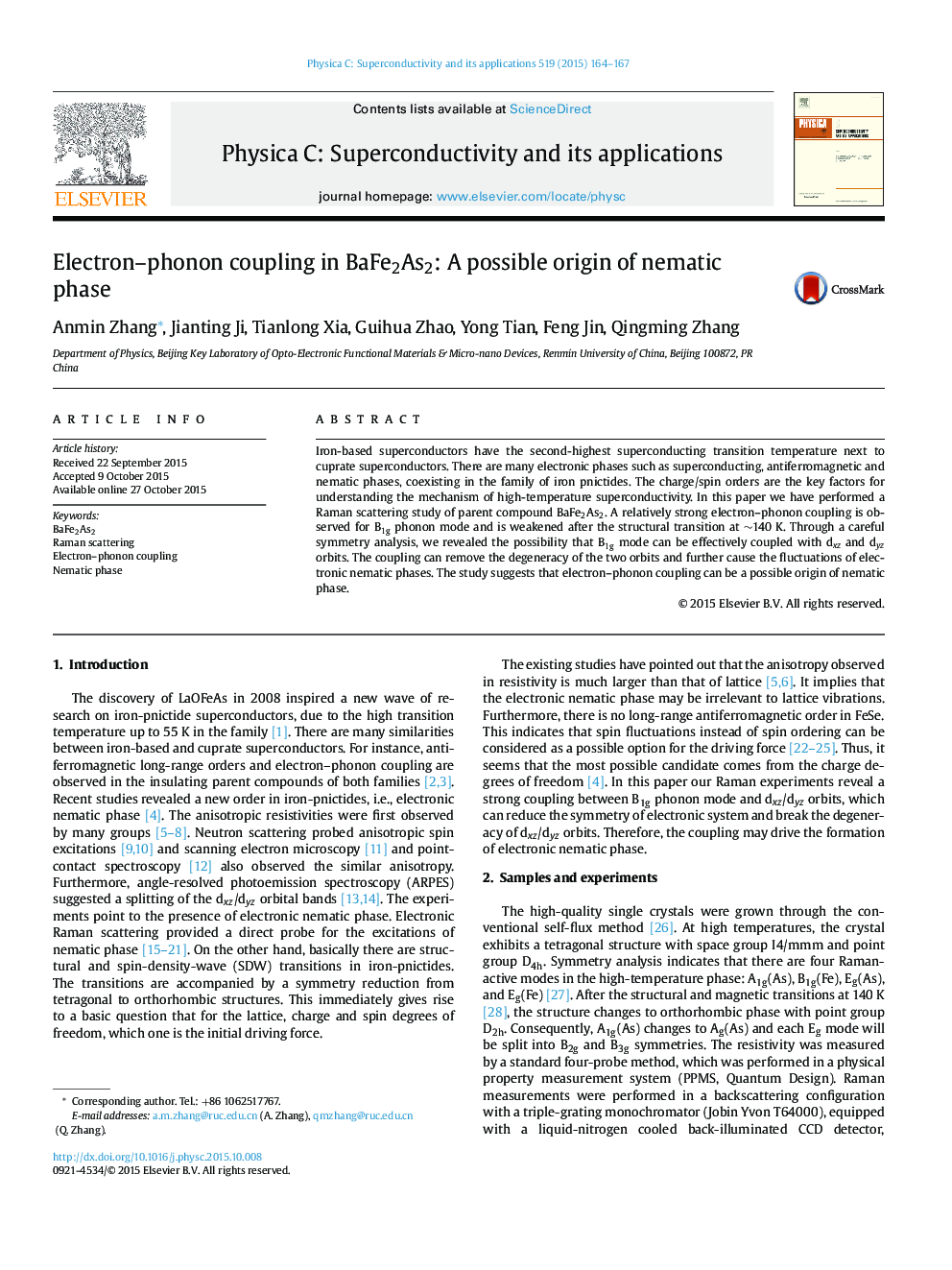| Article ID | Journal | Published Year | Pages | File Type |
|---|---|---|---|---|
| 1817463 | Physica C: Superconductivity and its Applications | 2015 | 4 Pages |
•Strong electron–phonon coupling is observed for B1g phonon mode.•B1g mode can be effectively coupled with dxz and dyz orbits.•Electron–phonon coupling may be the origin of nematic phase.
Iron-based superconductors have the second-highest superconducting transition temperature next to cuprate superconductors. There are many electronic phases such as superconducting, antiferromagnetic and nematic phases, coexisting in the family of iron pnictides. The charge/spin orders are the key factors for understanding the mechanism of high-temperature superconductivity. In this paper we have performed a Raman scattering study of parent compound BaFe2As2. A relatively strong electron–phonon coupling is observed for B1g phonon mode and is weakened after the structural transition at ∼140 K. Through a careful symmetry analysis, we revealed the possibility that B1g mode can be effectively coupled with dxz and dyz orbits. The coupling can remove the degeneracy of the two orbits and further cause the fluctuations of electronic nematic phases. The study suggests that electron–phonon coupling can be a possible origin of nematic phase.
